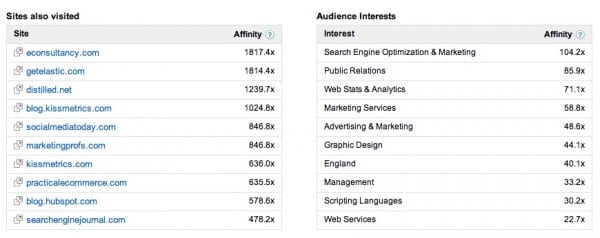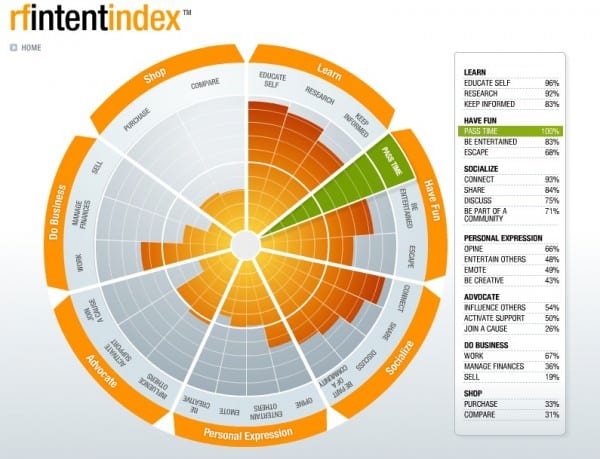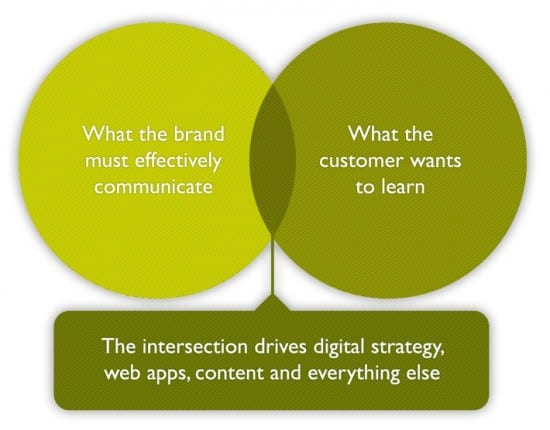8 practical techniques you can apply today to increase your online audience
There's much talk and some great examples, around how to best use social media to grow your reach online. But, how do you tackle boosting the audience you reach in a planned, structured way. We've picked what we feel are the most practical and important techniques to help you do just that. We'll add to and evolve this list throughout this year.
1. Target the most relevant audience segments
The fact is that your audience demographic, all the people that you could market to, vary in their importance in two ways - how commercially relevant they are - are they likely buyers, and also how likely your content is going to motivate them to either share and amplify your brand, or drive them further towards purchase.
Though you could theoretically appeal to lots of people, the reality of time and resources is that focussing on the audience most likely to amplify your message for you is most likely to be the best return on time an effort. How you do this is your influencer strategy.
So find people who are prolific sharers of topical stuff in your market. The beauty of this is they're easier to find, they're active online, they carry the most influence in your space and there's not so many of them. Focussing on the heavy sharers, or influencers, rather than the potential everyone (which means nobody, really) is logical, measurable and realistic. It means you're message already has the potential to be amplified with the least effort.
2. Fish where the fish are
I forget who first used this expression early in my career, but it's stuck with me, though I remember that they were referring to direct marketing at the time, it still holds true today. Certainly, more recently, Jeremiah Owyang has with this nice mini-deck:
As busy marketers it's tempting to think "channels", to do the natural search basics, maybe to focus on PPC searchers or attempt interrupting your way into Facebook somehow. The thing is that's what your competitors are doing, and it misses the opportunity. The reality is that your core audience segments will differ to the masses, as will those influencers with the largest propensity to share, this means they're easier to connect with than you might think. You probably already know a few blogs, forums, websites and or social communities where discussions and content are being posted on your topic (and if you don't a Google search will take much guesswork away). Take a targeted approach to finding your next customer, fish where the fish are.
The most obvious tool to help would also be the DoubleClick. Though advertisers have spent £100's millions learning about what advertising works, you can leverage your own intelligence online with tools like Google's DoubleClick AdPlanner.

When you do get involved in these marketing outposts, of course remember to add real value and be good web marketer. That way you'll be rewarded with trust and ultimately traffic. Spamming, trolling and aimless link dropping will get you the boot, or worse, a bad reputation in a space you want to build respect.
3. Listen up and leverage data
With tools like Radian6 and Alterian SM2 leading the field, and a plethora of lesser tools such as Social Mention, the ability to follow conversation around your brand or topics has never been easier. However, it's not the tools that matter so much but how you use them. Blindly using tools will simply mean that you end up with a dubious idea of "sentiment" and a list of company mentions - these maybe interesting but not so actionable.
Instead think about the intelligence or insight that that you can gather by questioning a market from multiple angles, those key influencers, topics that garner most tact ion, and why? Social listening software is too powerful to mildly observe, focus on insights.
4. Use the audience's language not yours
Don't just aim to be "SEO Friendly", and don't assume you already know the customers language well enough.
Understand the language and terms that your audience uses and the relative impact of those terms against purchase (or site goals) via your analytics. How would you explore the language within your market:
- Speak to customers (this being the most important!)
- Analyse keyword densities on high volume sites in your market
- Google's Adword keyword tool (exact match only!)
- Google Instant search - monitor the drop down
- Twitter search
- Social listening software
- Your own website analytics
Don't forget the simplicity of the last point, IF you use it, how powerful web analytics on your own site is to help you appreciate the detail around how users use your site, the keywords used to get to your content and what people search for on your website.
5. Create Relevant, rich content for today's inbound marketing
You already know that some people will love what you do more than others. All you can do is make content that works on the web - whether that's particular topics, tone or content types. Remember that most web users are seeking to learn something or pass time, they're not typically setting out to buy something, see the RF Intent Index below. People like short, snappy and consumable content that teaches, entertains inspires - otherwise why are campaigns that entertain (Lynx, Old Spice, Tippex etc) the most popular, as are informative infographics on particular topics.

Relevant entertainment and information is your opportunity, not just creating any content. Get under the skin of what will inspire your demographics to re-share your content. Don't create great content for everyone, create it for the right someone.
Rich content (photos, illustrations and video) offer massive opportunity for traffic generation in a number of areas including Google Image search, YouTube, Flickr, Vimeo etc. Encourage re-use in return for a credit (a link back to your source). Ensure you get the link! Great, rich content is the most easily shared and repurposed, just keep it relevant for maximum affect.
Keep learning about you target audience and the segments within it. Use multiple information sources to do just that, match content to their unmet needs, here are several way to keep close to your audience and in turn generate the right content:
- Segment your current data (customer value, leads, demographic, sex and age)
- Support internal data with external, using tools such as Follower Wonk
- Email surveys to those segments, once the above is done, base around something useful, like motivation to help segment in a more meaningful way
- Spot those segments in point 3, the types that are active online
6. Participate with your audience and peers
This sounds obvious - so where and how might you participate? This is mostly down to your audience segments and where they are online, see point 2. Here are some ideas:
- Guest blog or re-share content. This is something Dave and I do. Find related and influential sites (or site owners) and connect with them. Focus your efforts though, only right for the most relevant bogs. Make sure you approach with ideas and a great example that's ready to publish - make it easier to get a yes
- Comment in other's blogs, as above, choose carefully where you invest that time. Have a consistent name, picture and profile in order to to best build your brand reputation. You can find top bloggers in Google's blog search, for example as well as Follower Wonk.
- Social sharing through Reddit and StumbleUpon, and more recently the much hyped Pinterest. There are thousands, this is a massive area. The golden rule is to add value, not spam with links so work hard to be relevant and leverage your great content to best affect (point 6). Invest to get.
- Q&A sites are gold so far as rich interactions around things people want to learn. How can you position your content to make it genuinely useful and in turn ensure strategic (selected answers!) opportunities, and so links, back to your website.
- The amount of social networking and content ideas are also vast in Q&A sites. Examples includes, Answers.com, Quora, Yahoo! Answers and Beepl.com
Remember that the web is alive and driven by linking. So don't be afraid to always link back to great sources of information that you're referencing as well as your own content. The benefits are of course two-fold - you drive traffic via the link as well as tell Google how important that content is.
7. Promote and think guerrilla
Not an actual guerrilla! Just savvy and commercial.
Don't be adverse to learning how competitors are getting their reach, campaigns, creative and links. Understand what works and de-construct the success of others as best you can using tools like Radian 6 and Majestic SEO. If an influencer is participating in helping a competitor in some way, then in the spirit of offering choice to their reader or follower base they're very likely going to be interested in helping you, though do re-read point number 5 with why they would do that firmly in mind.
Promote yourself (and your content) at every opportunity, without being annoying. Success in social, content and search engine marketing are especially born from sustained effort in the right areas. Rome is certainly not built in a day, you have to earn your way in to the market. As of writing, Twitter just topped 465 million registered accounts, Facebook has over 850 million users, Google+ has nearly 100 million and LinkedIn is over 130 million. These networks demand vast amounts of time and interest from Internet users around the world, and those that participate on these services are likely to help spread the word about your website, service or blog. What content (that word, again!) can you use to promote yourself within a network where it adds value. Use content that best fits what you want to promote and what the user in those networks want to learn about.

8. Combining Email and Social media marketing
It's often the case that your audience you have built as email subscribers is larger than your social media audience (remember ASOS and the EFT ratio). So if you get the basic CRITICAL factors of email marketing right, then you can encourage your audience to share more through social media and so boost your overall audience. Giving a great incentive or reason to share is key.
Dave has written a separate post giving examples of inspiring email campaigns that focus on social media. Here's one of my favourites:











